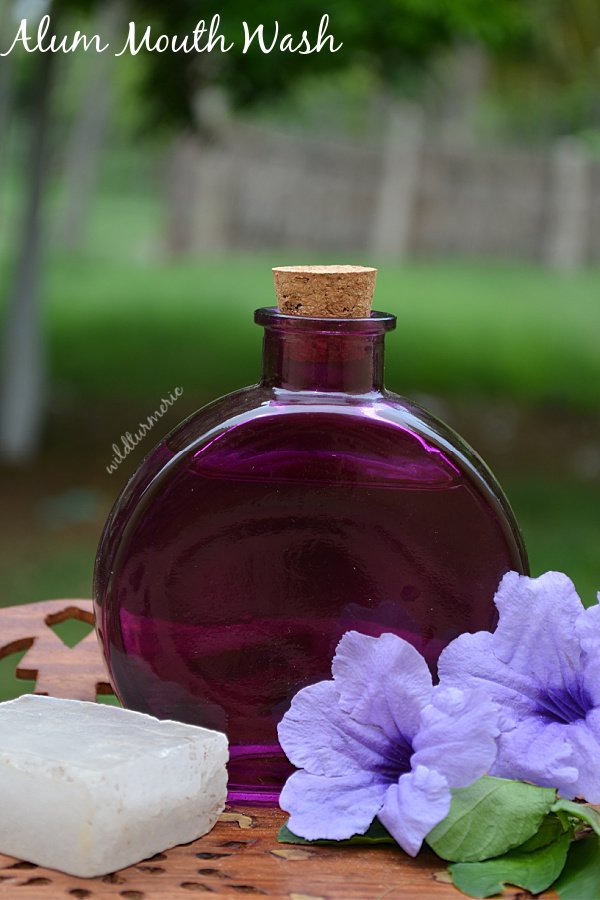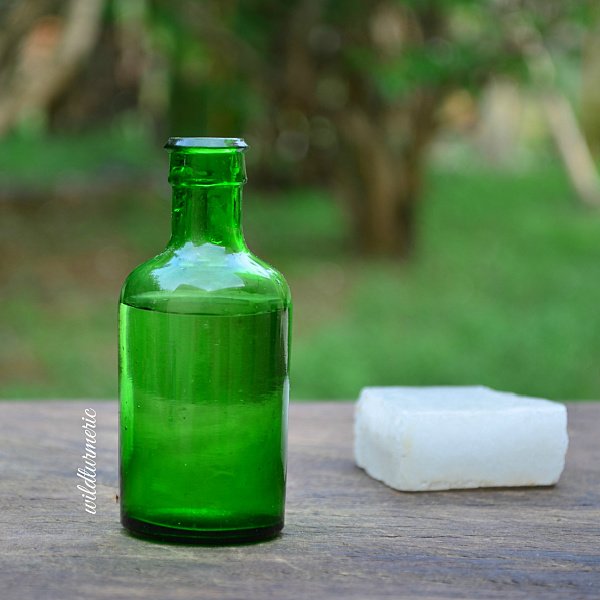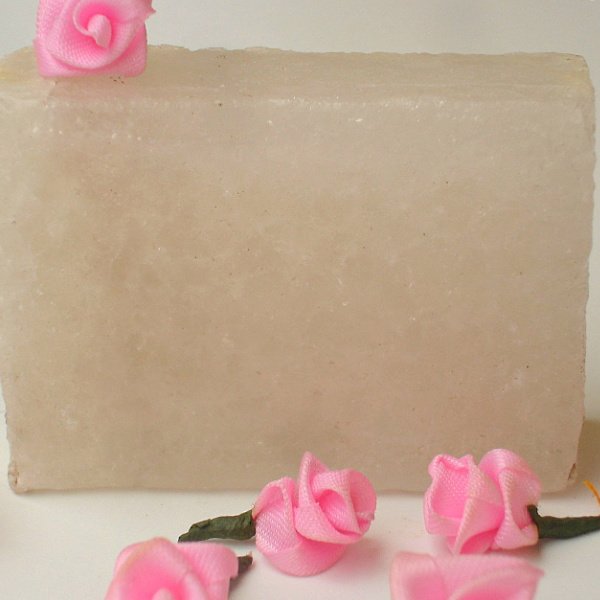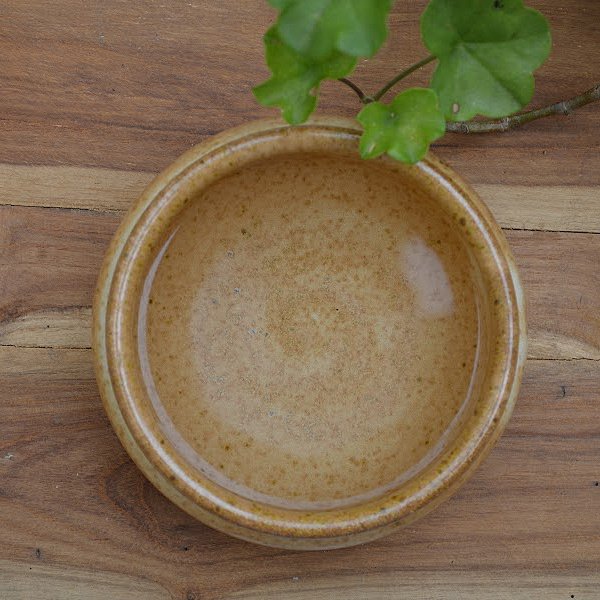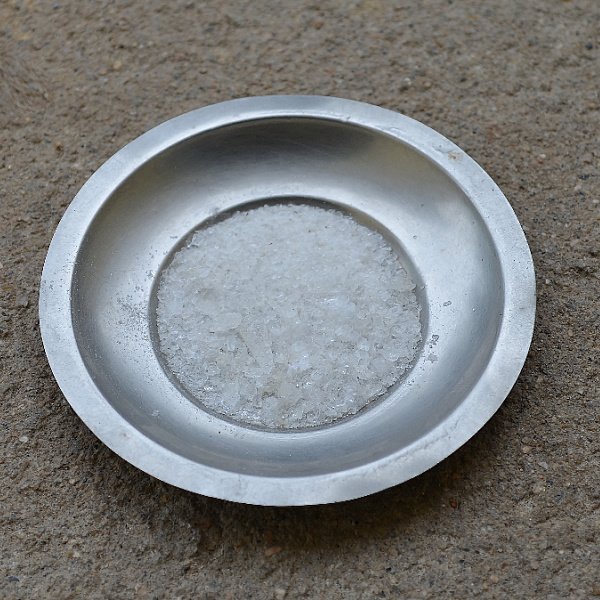
Alum, popularly called Fitkari in India, has a long history of health and medicinal use. It has many applications, from water purification to treating canker sores. However, there are many types of alum, and it is important to know which one to use, how to use it correctly, and what safety precautions to take to prevent side effects.
What Is Alum?
Alum, often called Fitkari or Phitkari, is a mineral salt very commonly used in India. Though there are many types of alum, potassium alum is the one most often used for household purposes. It is also the one that is most commonly referred to as “alum.” My grandma always had an alum block at home—now I do too. When we think of alum, many of us recall its use in shaving, but this mineral has other well-known uses and benefits as well.
Alum Formula
The chemical formula for potassium alum is KAl(SO₄)₂·12H₂O. It is the hydrated form of potassium aluminum sulfate, and its scientific name is potassium aluminum sulfate dodecahydrate. The “dodecahydrate” part of the name simply means that each molecule of the salt is attached to twelve molecules of water in its natural crystal form.
Alum Common Names
Potash alum is commonly called Alum or Pickling Alum in English, Fitkari in Hindi, Phitkari in Urdu, Padikaram in Tamil, Patika in Telugu, Phatakadi in Gujarati, Phatikara or Patika in Kannada, Sphatikari in Sanskrit, Patki in Sindhi, Phatakiri in Bengali, Phatakadi in Malayalam, Tawas in the Philippines, and Turti in Marathi.
Characteristics Of Potash Alum
Potash alum is found naturally as an encrustation on rocks where potassium and sulfide minerals are exposed to weathering. Alum is colorless in its crystal form, and a pure alum block will be completely translucent. Alum dissolves easily in water, and its solubility increases as the water gets warmer. When heated, it liquefies and bubbles as the water molecules evaporate, leaving behind a porous, lightweight powder. This dehydrated form is often referred to as “burnt alum.”
Alum Chemical Properties
Alum has several key properties that make it useful. It is known to be:
- Astringent: This means it can cause tissues, like skin, to contract or shrink.
- Antihemorrhagic: This property allows it to help stop bleeding from minor cuts.
- Antibacterial: More accurately, it is bacteriostatic, which means it inhibits the growth of bacteria rather than killing them.
These properties make it effective for certain skin applications and personal care uses. Alum has been used for centuries in traditional systems like Ayurveda. In Ayurveda, a specially purified and processed form of alum, known as Sphatika Bhasma, is used in some preparations. This is very different from the raw alum stone you might buy in a shop.
Alum Traditional Uses
Traditionally, alum has been used in many ways. A gargle made with alum and water is sometimes used for a sore throat. It is also used to help stop bleeding from small cuts and can be applied to soften calloused skin on the feet. For external hemorrhoids, some use it in a sitz bath to help reduce inflammation and discomfort. In skincare, alum is most known for its skin-tightening effects. I sometimes use alum in face packs. It is also used to help manage oily skin and as a natural deodorant.
Can We Consume Alum?
Raw alum should not be consumed. While some traditional medicine systems use alum internally, it is a specially purified and processed form that is prepared by experts. Ingesting raw alum can be toxic, so it should only be used externally unless under the direct guidance of a qualified medical or Ayurvedic professional.
Alum Use in Cooking & Pickling
Alum has a history in canning/pickling to help keep fruits and vegetables crisp. Modern food guidance for home canning generally doesn’t recommend alum for crispness (the gains are small and it can make pickles bitter). If you’re canning at home, follow current tested recipes from reputable sources.
Alum Stone Spiritual Uses
Alum stone also has spiritual uses and is believed by some to help clear negative energy. In Vastu, for example, it is a belief that hanging a piece of alum at the entrance of a house can help neutralize Vastu defects. My aunt used to hang a block of alum stone in the entrance hallway. These uses are based on cultural/spiritual beliefs.
Alum Industrial Use
Industrially, alum is used in leather tanning, in making textiles fire-resistant, and as a dye fixer to help color set into fabrics. One of its most important industrial uses is for water treatment. It is amazing how alum clarifies water, and it is an ingredient often recommended for campers in case they run out of clean water but it should always be boiled before drinking.
Types Of Alum
To use alum correctly, it is good to know the different types that are commonly found:
1. Potassium Alum:
This is the type of alum that has been used in traditional medicine for centuries. It is the most common form used in home remedies and is the type referred to as fitkari or phitkari in India.
2. Ammonium Alum (NH4Al(SO4)2⋅12H2O)
Used in some deodorants, water treatment, and dyeing/tanning. It is a common, inexpensive salt used more in industrial contexts.
3. Sodium Alum (NaAl(SO4)2⋅12H2O)
Sodium alum is used mainly in the food industry historically (e.g., as part of leavening systems). Modern baking powders typically use specific aluminum salts like sodium aluminum sulfate rather than generic “alum.”
4. Chrome Alum (KCr(SO4)2⋅12H2O)
Chrome alum is a deep violet compound used primarily in the leather tanning industry, as it helps stabilize the leather.
5. Aluminum Sulfate (Al2(SO4)3)
It is sometimes called “papermaker’s alum” as it is used in paper making but is technically not a true alum. Because it is highly acidic, it is also used in gardening to help balance the pH of alkaline soil.
6. Selenate Alum:
This type of alum forms when selenium takes the place of sulfur. This is a lab/industrial chemical—not for home use.
Alum Side Effects
While alum has many uses, it is important to be aware of potential side effects and to use it safely.
Internal consumption of raw alum is toxic and should be avoided. It should only be used as a medicine under the guidance of an expert who can provide the correct, purified form.
When using alum as a deodorant, some people with sensitive skin may experience irritation. It is a good idea to do a patch test on a small area of skin first.
When using alum on your skin, use it sparingly. It can cause dryness, so it is always a good idea to apply a moisturizer afterward. Once after using an alum face pack, I skipped using moisturizer and my skin felt stretchy.
The claim that applying alum to the stomach can reduce belly fat has no scientific evidence in humans. The only related study involved oral consumption in rats and cannot be applied to people.
Despite being a popular folk remedy and a few people claiming that it worked for them, there is no scientific evidence that alum can remove unwanted hair or slow its growth.
CRITICAL WARNING:
Never use alum for “vaginal tightening.” This practice is dangerous. It can disrupt the natural pH of the area, cause severe irritation and dryness, and increase the risk of infections.
You should never use alum in or near your eyes. Some traditional remedies suggest using it for eye problems, but this is extremely dangerous. Alum is a chemical that can cause severe injury to the delicate tissues of the eye, leading to corneal damage and even permanent vision loss. Always seek advice from a medical professional for any eye-related issues.
Alum Dosage
For water clarification, the amount depends on how cloudy the water is. Start with a very small pinch per liter, stir well, and let it sit until particles settle (30–60 minutes). Carefully pour off the clear water and always boil/disinfect before drinking. More alum does not mean cleaner water—avoid overdosing.
For skin and personal care, there are no clinically established amounts/dosages. Use the smallest amount that works, and stop if you feel irritation.
Quick “Safe Use” Checklist
Do a patch test first (inner forearm, 24 hours).
Keep off broken/irritated skin.
On the face, limit to 1–2×/week and moisturize after.
Don’t share an alum block (barbershop hygiene issue).
Keep away from eyes and genitals.
Clarified water must be boiled/disinfected before drinking.
Where to Buy Alum?
In India, you can find alum stone easily. Alum is sold as a fine powder under the name “Alum Powder” or in blocks, sometimes called “shaving alum.” It is inexpensive and can be stored for years. I usually get mine from a local herb shop (‘nattu marundhu kadai’).
How to Make Alum Powder?
For home remedies, if you have an alum block, you can easily powder it using a mortar and pestle. Grind it to a very fine powder, sieve it if necessary, and then it is ready to use.
Top Medicinal Uses & Health Benefits Of Alum (Fitkari) For Skin & Health:
1. Alum For Canker Sores & Bleeding Gums:
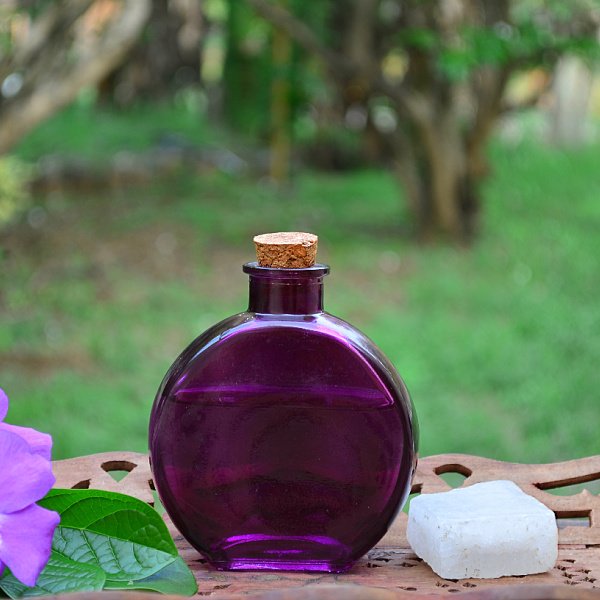
Alum’s astringent nature can help shrink surface tissue and make sore spots feel less raw. A common home remedy is to press a tiny pinch of alum powder directly, but it stings and can irritate mucosa. I prefer the gentler route: a mouth rinse made with alum.
Dissolve a pinch of alum powder and a little salt in a glass of warm water. Swish this in your mouth two to three times a day. This rinse can also help with minor gum bleeding due to its ability to constrict blood vessels. However, this remedy is not for children.
2. Alum For Cracked Heels:
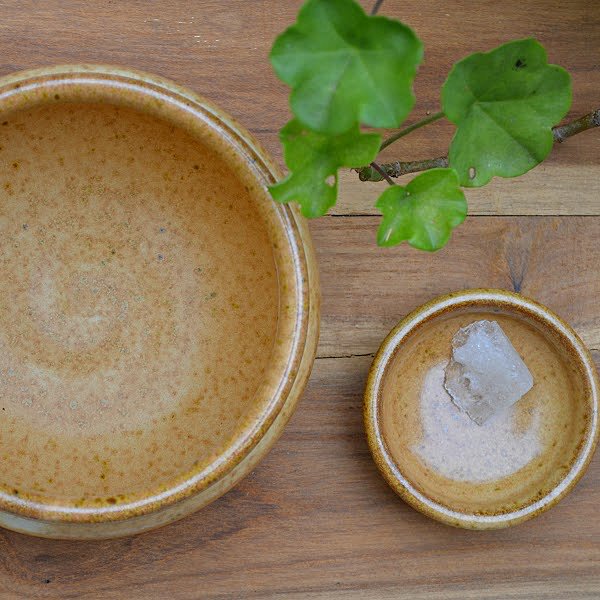
Alum can be useful for softening the hard, calloused skin associated with cracked heels. I make this simple alum foot soak that greatly helps cracked heels. In a wide bowl, dissolve a teaspoon or two of alum powder in enough warm water to cover your feet.
Soaking your feet in this mixture can help soften the tough skin. After soaking, pat your feet dry and apply a good moisturizer, like coconut oil.
3. Alum Uses For Shaving:

Alum has been used as an aftershave treatment for centuries. Its ability to stop bleeding from minor nicks and cuts makes it very effective. After shaving, simply wet an alum block and gently rub it over your face for a few seconds, then rinse with cool water. Its antibacterial properties also help prevent irritation and infection. It is important not to use a shared alum block, such as one at a barber shop, as this can spread skin infections.
4. Alum Uses For Water Purification:
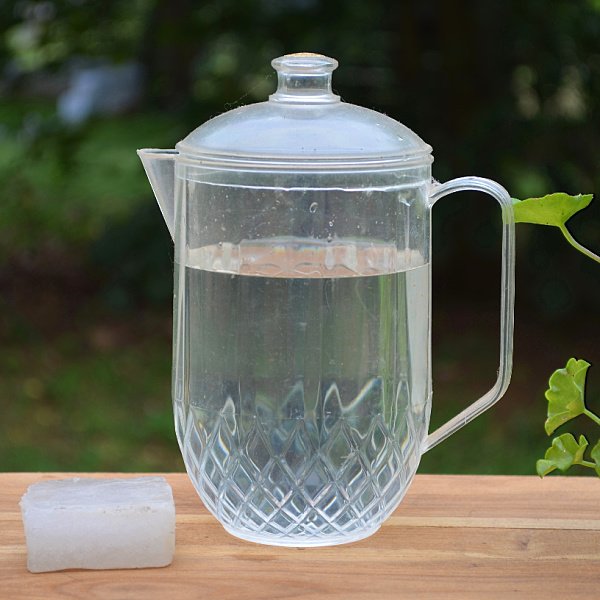
Alum is an excellent and affordable way to purify cloudy water. When added to water, alum particles cause the tiny impurities to clump together in a process called coagulation. These clumps become heavy and settle at the bottom, leaving clear water on top.
To purify muddy water, add a very small amount of alum powder and stir. Let it sit until the particles have settled, then carefully pour off the clear water. It is very important to boil this water before drinking it to kill any remaining microorganisms.
5. Alum Sitz Bath For Piles (Hemorrhoids):
For people experiencing discomfort from external hemorrhoids, an alum sitz bath may provide some temporary relief. Alum’s astringent properties can help reduce inflammation and soothe irritation.
To make a sitz bath, fill a tub with enough warm water to immerse your hips. Dissolve about half a tablespoon of alum powder in the water. Sit in the tub for 20 to 30 minutes. This may help ease symptoms, but it is not a cure for hemorrhoids.
6. For Toenail Infection
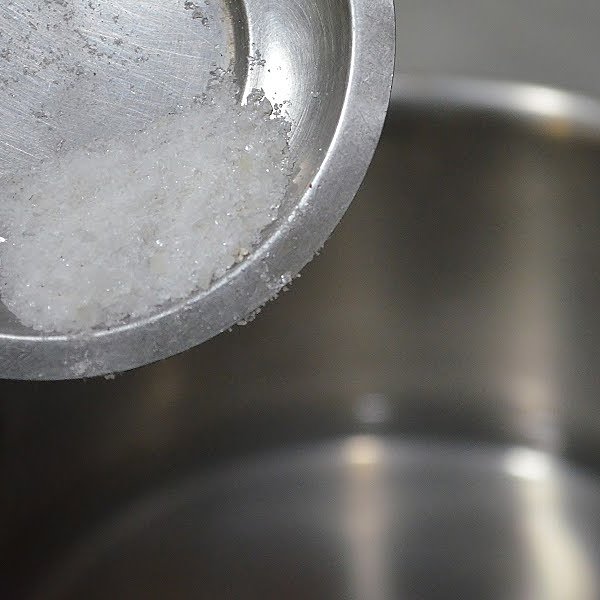
I tried alum foot soak for treating my toenail infection once and it greatly helped. Its effectiveness comes from two of its key properties: it is a strong astringent, which helps to dry out the moist environment where fungus thrives, and it has antimicrobial properties that inhibit the growth of the fungus itself.
For the foot soak, dissolve a tablespoon of alum powder in a basin of warm water and soak the feet for 15-20 minutes, then pat dry. If your toenails are discoloured and thick, see a dermatologist.
7. Alum As A Deodorant For Body Odor:
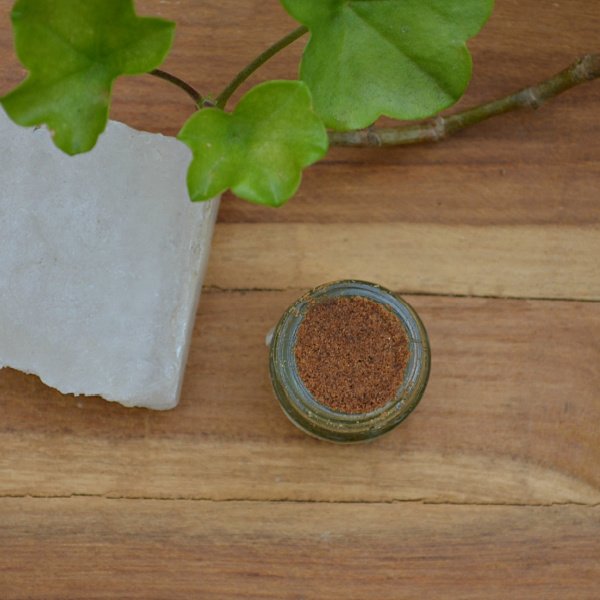
Alum is a wonderful natural deodorant. Sweat itself does not have a smell; body odor is caused by bacteria on our skin that feed on sweat. Alum works by inhibiting the growth of these odor-causing bacteria.
Unlike antiperspirants, it does not stop you from sweating or block your pores. To use it, you can simply wet an alum block and rub it on clean underarms. Once it’s dry, you can use a natural dusting powder.
8. Alum Uses For Skin Tightening:
Alum is well-known for its skin-tightening effects. This is due to its natural astringent properties, which cause skin cells to temporarily contract. This can make your skin feel firmer and reduce the appearance of pores for a short time.
Early lab data suggests that potassium alum may help improve the skin’s natural barrier function, helping it stay hydrated and protected. To use it, you can wet an alum block and gently rub it on your damp face for a few seconds, once or twice a week. Always apply a moisturizer afterward, as alum can be drying.
9. Alum Uses For Pimples & Acne:
Because of its astringent and antibacterial properties, alum may be helpful for people with oily, acne-prone skin. It can help reduce surface oiliness and inhibit the growth of some skin bacteria linked to acne. You can make a simple face pack by mixing a tiny pinch of alum powder with a base like fuller’s earth (multani mitti) and rose water.
Apply the paste to your face, let it dry, and then rinse it off. Use alum sparingly to avoid excessive dryness. This should be seen as a supportive remedy for managing oiliness, not as a primary cure for acne or acne scars.
10. Alum For Mosquito Control:
Emerging research has shown that alum has the potential to get rid of mosquitoes. An early study found that it was effective against the larvae of Anopheles stephensi, a mosquito that can transmit malaria. The study indicated that alum was most effective against the earliest larval stages and could be a simple, inexpensive, and environmentally safe agent for vector control programs.
We can mix alum powder in standing water around our homes where mosquitoes breed, don’t dose natural ponds/streams. Since alum clumps and settles particles and makes the water clear, it is less hospitable for larvae. Alum also has some insecticidal properties, affecting the larvae’s growth and potentially leading to their death.
Conclusion
Alum, or Fitkari, is a truly versatile mineral with a rich history of use in everything from skincare to water purification. Its most reliable benefits come from its natural astringent and antibacterial properties, making it an excellent and affordable choice for a natural deodorant, a soothing aftershave, or a quick remedy for minor shaving cuts.
While many traditional uses for alum exist, it’s important to approach them with knowledge and care. The key to using this mineral effectively is to focus on its proven applications while being mindful of safety. Always remember to avoid contact with your eyes, never use it for internal or vaginal applications, and be aware of its potential to cause skin dryness.
By understanding both its strengths and its limitations, you can safely enjoy the benefits of this simple, time-tested mineral and make it a valuable part of your personal care routine.
Frequently Asked Questions & Answers:
Is it safe to use alum daily?
It is not recommended for daily use on the face as it can cause dryness and irritation. However, it can be used daily as a deodorant, but always in moderation to avoid side effects.
Does alum burn fat?
There is no scientific evidence that applying alum externally burns fat in humans. A study on rats showed oral intake could reduce weight, but this cannot be applied to people.
Can we rub alum on underarms?
Yes, you can rub a wet alum block on clean underarms as a natural deodorant. It works by creating a surface that inhibits the growth of odor-causing bacteria.
Are alum and fitkari the same?
Yes, alum and fitkari are the same thing. “Fitkari” is the Hindi name for alum, which is a naturally occurring mineral salt.
Can alum tighten skin?
Yes, alum can temporarily tighten the skin due to its astringent properties, which cause skin cells to contract. It can also help reduce the appearance of pores.
How to apply alum on face?
You can gently rub a wet alum block on your damp face for a few seconds and then rinse it off. Alternatively, you can make a paste with alum powder and rose water to apply to specific areas.
Does fitkari remove facial hair?
Though it is a popular remedy for removing facial hair, there isn’t solid evidence that fitkari (alum) removes facial hair.
Can alum remove dark spots?
Alum is traditionally believed to help lighten dark spots and pigmentation by exfoliating the skin. However, there is currently no strong scientific evidence to prove it reduces melanin or permanently removes dark spots.
Is alum good for teeth?
Alum can be beneficial for oral health by helping to heal canker sores and reduce minor gum bleeding. However, there is no evidence that it can whiten teeth.
How to use alum powder?
Alum powder can be mixed with water or rose water to create a paste for facial application. It can also be dissolved in water to make a mouth rinse or a wound wash.
REFERENCES
https://pmc.ncbi.nlm.nih.gov/articles/PMC7276163/
https://pmc.ncbi.nlm.nih.gov/articles/PMC2756492/
https://pmc.ncbi.nlm.nih.gov/articles/PMC3216135/ https://pmc.ncbi.nlm.nih.gov/articles/PMC4945504/
https://scialert.net/fulltext/?doi=pharmacologia.2012.729.733
https://pmc.ncbi.nlm.nih.gov/articles/PMC3081732/
https://pubmed.ncbi.nlm.nih.gov/32549727/
https://www.who.int/docs/default-source/wash-documents/wash-chemicals/aluminium-chemical-fact-sheet.pdf?sfvrsn=3dd7e5b3_4
https://nchfp.uga.edu/how/pickle/general-information-pickling/general-information-on-pickling/
Discover more from Wildturmeric
Subscribe to get the latest posts sent to your email.

